From its wide stance and flared bodywork, to its incredible off-road capability, the Ford Raptor is seriously imposing. There’s simply nothing like it on the market, which is why the United States Border Patrol has pressed a fleet of them into service along the Mexican border.

| 1. Step 1 in the project was establishing the performance baseline. On Livernois Motorsports’ DynoJet chassis dyno, the stock, 6.2L-powered 2011 Raptor project truck made 323 horsepower and 343 lb-ft of torque at the rear wheels.
But there’s another imposing attribute about the Raptor: its curb weight. Tipping the scales at a none-too-svelte 6,200 pounds in SuperCrew trim, it’s more than three tons of driving fun. The first examples off the assembly line were equipped with the 320 horsepower 5.4L engine, which was barely adequate when it came to turning the truck’s 35-inch-tall tires with authority. Ford rectified the situation by offering the 6.2L V-8 in 2010 as an option, which brought the output level up to 411 horsepower. More significantly, the torque rating also increased, from the 5.4’s 390 lb-ft to 434 lb-ft. Thankfully, the 6.2L became the standard Raptor engine in 2011.
The 6.2L unquestionably improved the Raptor’s feeling of performance behind the wheel, but it still didn’t set the asphalt alight. To see if we could make the Raptor a little more rapid, we dropped off this new Raptor SuperCrew at Dearborn Heights-based Livernois Motorsports (livernoismotorsports.com). To keep things simple and relatively affordable, a regiment of bolt-ons and a power tune was prescribed, including a new Corsa stainless after-cat exhaust system and an Airaid cold-air induction system. A custom, premium-gas tune was also added via an SCT handheld tuner, which made the most of the newly installed parts and then some.

| 2. The first upgrade to be installed is the Corsa exhaust system. We’ve been a fan of their quality and performance for a number of years. Rather than flow-reducing bends in the exhaust path to reduce sound levels, the Corsa muffler has a straight-path design, with a series of carefully sized and located channels on both sides of the flow tube. An air gap at the front of flow tube allows targeted waves to enter the channels, which are then reflected back to the gap 180 degrees out of phase, effectively canceling noise. More importantly, the design cancels the “drone” that can make many aftermarket exhausts unpleasant on the highway.
The installation basics of the new parts are outlined in the accompanying photos, but we’ll cut to the chase and tell you the Corsa exhaust alone added 10 rear-wheel horsepower and 8 lb-ft of torque, for a mid-project total of 333 rwhp and 351 rwtq. The next testing was performed with the Airaid intake installed and Livernois’ new tune, a combination that built on the exhaust system’s gains to bring the final results to 343 rear-wheel horsepower and 369 rear-wheel torque. That’s 20 horsepower and 26 lb-ft more than stock.
It’s important to note that the intake system alone would not likely have contributed more than a few real-world horsepower, because the inlet tube is designed to maintain the approximate stock diameter in front of the mass airflow meter. That allows it to be installed without tuning. By cutting out the inner section of the tube, the intake diameter opens up significantly. Livernois Motorsports did this because they knew the Raptor would receive a new tune as part of the project. Props to Airaid for obviously designing their intake so that it could be modified.
The chassis dyno results represent about 6.5 percent and 7.5 percent increases in rear-wheel horsepower and torque, respectively, which brings us to the other bottom line of the story: The cost. Those extra horses and pound-feet cost $2,050 at Livernois Motorsports, including the pricing for the parts (and the SCT tuner), custom tuning, and installation. That’s not exactly cheap, but it’s definitely in line with the going rate for such upgrades and tuning these days. The freer-flowing intake and exhaust systems will also support greater gains if he decides to take our truck’s performance to an even higher level, such as with new camshafts or a power adder.

| 3. Of course, before the Corsa system can be installed, the stock system must be removed. That starts with removing the hangers holding on the factory “cat-back” portion of the system. Next, the section muffler and tailpipes were unbolted from the forward section of the stock exhaust system. Here’s where a lift and an extra pair of hands came in handy. The muffler and tailpipes comprise one, long assembly. Sure, the tailpipes could be cut to make removal over the axletubes less of a hassle, but with a little elbow grease and the help of a buddy, the system was pretty easy to remove intact.
Right now, however, we’ve got a righteously rapid Raptor.
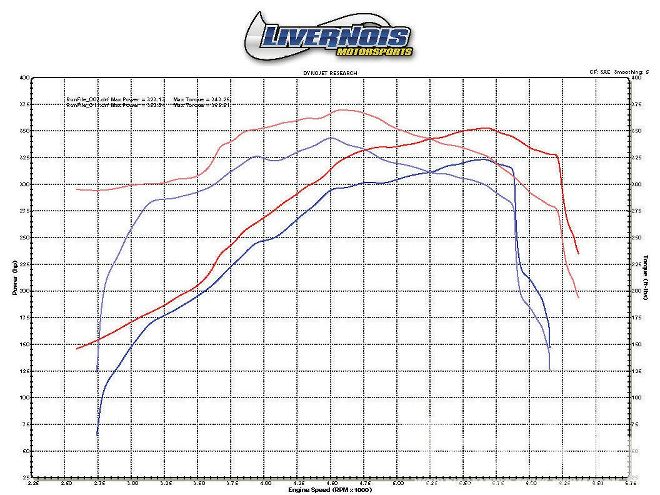
| 2011 Ford Raptor Rapid Raptor dyno Chart
Livernois’ Really Rapid Raptors
The bolt-on performance enhancements described in our main story simply scratch the surface of Livernois Motorsports’ Raptor revitalizations. For a customer in the Middle East, the shop just finished and shipped a twin-turbocharged Raptor that made 635 horsepower and 767 lb-ft of torque at the tires. That’s more like 760 horsepower and 920 lb-ft at the crankshaft. It took more than a couple of turbos sandwiched into the exhaust stream to achieve that power. The combination includes:
- Livernois’ 400ci “stroker” bottom end (the stock 6.2L displaces 379ci, and this project truck started life with the even-smaller 5.4L)
- Livernois’ own CNC-ported cylinder heads (used with the stock camshafts)
- A custom valve spring kit and rocker brace system developed by Livernois
- A custom turbo system featuring two quick-spooling, dual-ball-bearing Garrett GT35R turbochargers and a large intercooler
- Magnaflow exhaust system

| 2011 Ford Raptor Rapid Raptor front View
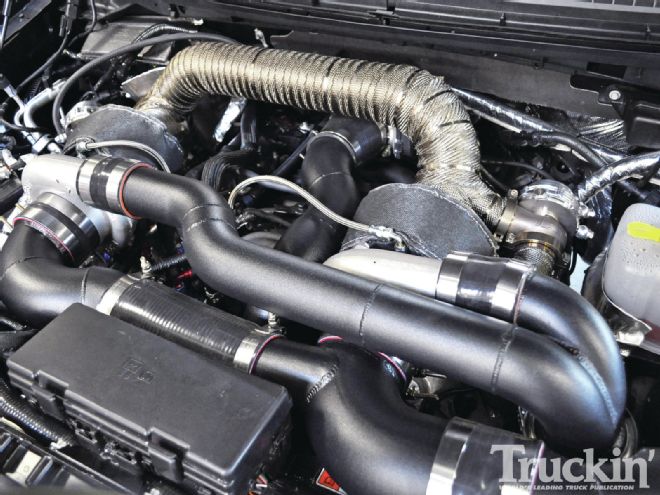
| 2011 Ford Raptor Rapid Raptor engine Bay
THE BOTTOM LINE
Trim
RWHP
RWTQ
Stock 6.2L V-8
323
343
With Corsa exhaust
333
351
With exhaust, Airaid intake and tuning
343
369
Cost
$2,049.99
(including parts, labor and dyno tuning)
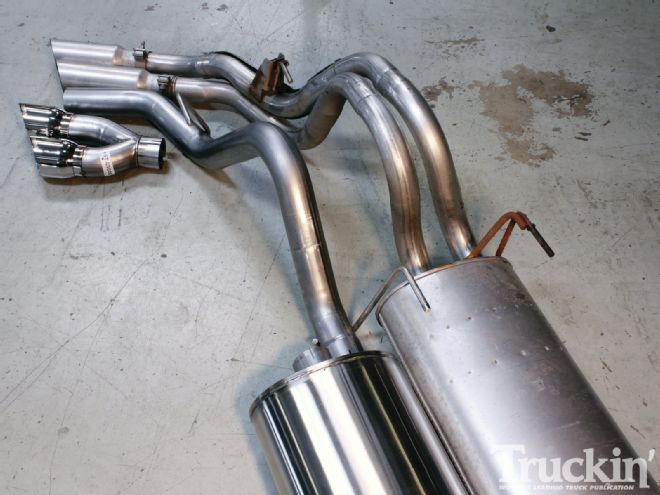
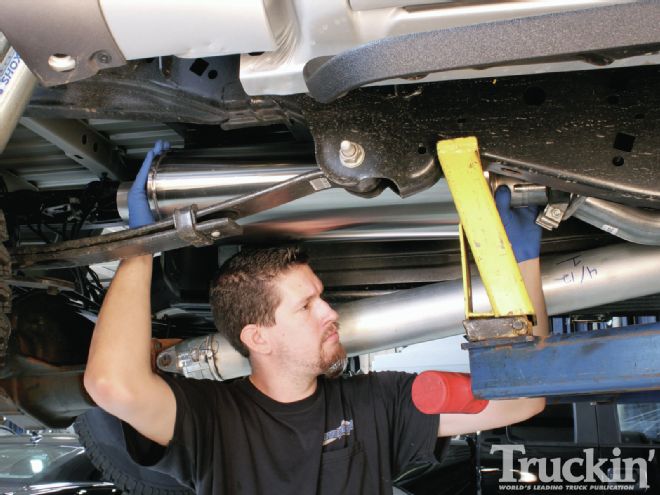
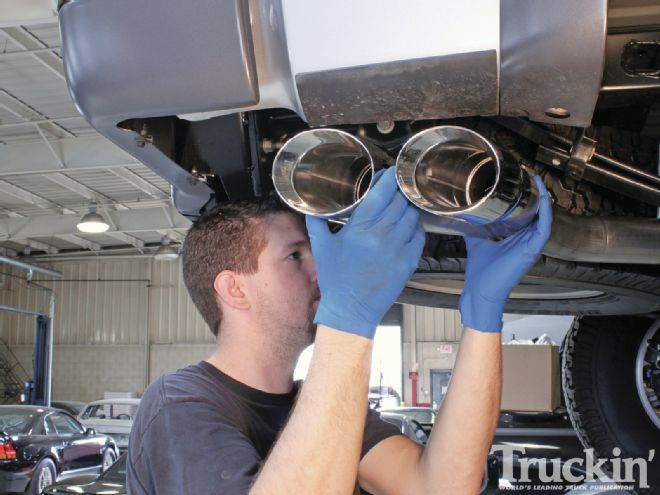
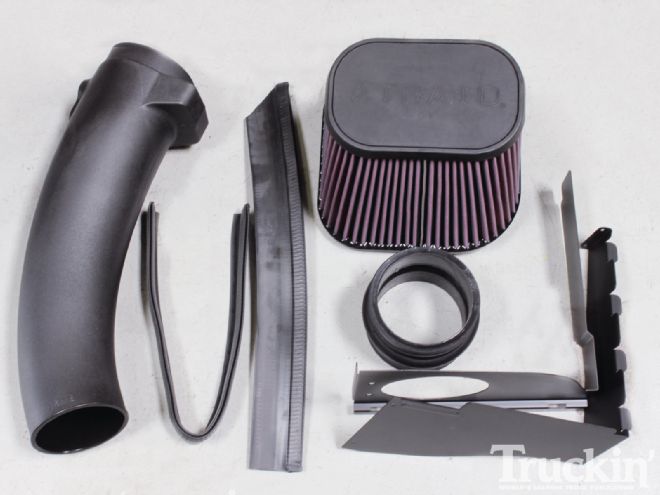
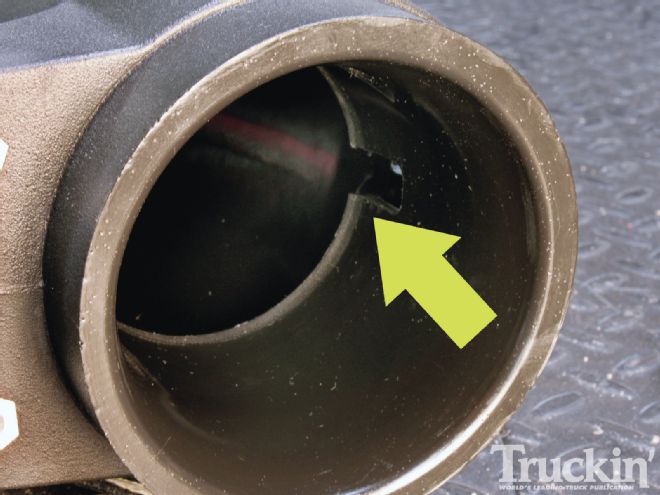
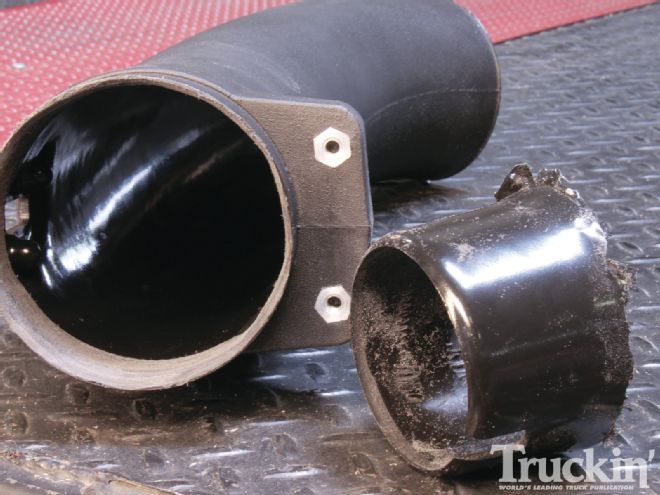
 | 2011 Ford Raptor Rapid Raptor dyno Chart
Livernois’ Really Rapid Raptors
| 2011 Ford Raptor Rapid Raptor dyno Chart
Livernois’ Really Rapid Raptors | 2011 Ford Raptor Rapid Raptor engine Bay
THE BOTTOM LINE
| 2011 Ford Raptor Rapid Raptor engine Bay
THE BOTTOM LINE